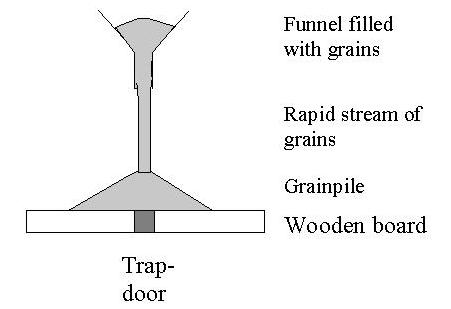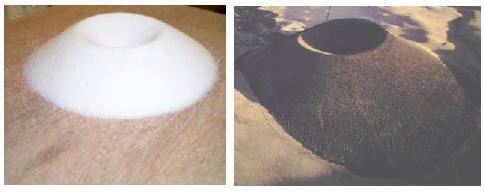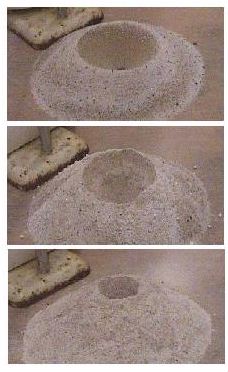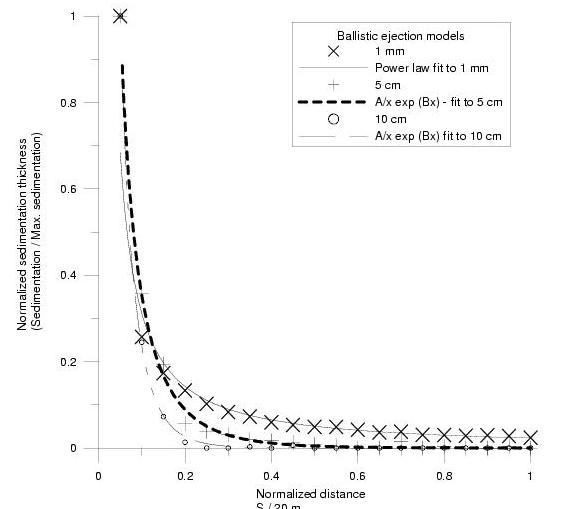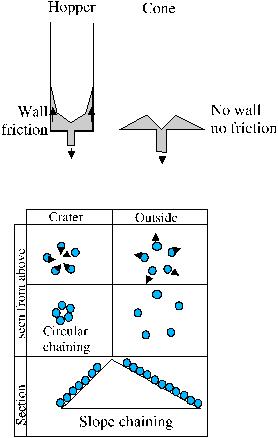EU-RTN project on cinder cone formation
Pyroclastic ejecta constructs, the most frequent type of which are cinder cones or scoria cones, are the most common volcanic landform on Earth. They have also been documented on the Moon (McGetchin and Head 1973; Vespermann and Schmincke 2000; Spudis 2000), Venus (eg. Guest et al 1992) and Mars (Wilson and Head 1994; Fagents et al 2002). Cinder cone fields make up 2% of all listed volcanic areas in the Catalogue of Volcanoes (Simkin and Siebert 1994) and each of these fields can contain up to hundreds of cinder cones (Settle 1979) and up to a thousand vents (Connor and Conway 2000). Whereas many cinder and scoria cones are mined for important raw material worldwide (Heiken, 2002, in press) the main reason for studying cone-forming eruptions is the potential hazards such eruptions pose to human populations and local activities. For example, Vesuvius has had a dozen cone-forming explosive eruptions since 1631 (Arrighi et al 2001), and while Vesuvius is currently in its longest repose period since 1631, the recurrence of such eruptions is anticipated within some decades and will pose considerable hazards both on the ground (600,000 people living at Vesuvius' foot) and for air traffic.
Several large cities (eg. Auckland, NZ; Portland, Oregon, USA; Mexico City) are at least partly built on dormant cinder cone fields. A cinder cone north of Lake Tahoe has been used for sewage disposal, posing local pollution problems (Matthews and Franks 1971). The storage of low and medium-grade nuclear waste within a cinder cone field at Yucca Mountain, Nevada (Yucca Mountain Project/YMP, 2002) has been adopted by the US Government in July 2002, despite the reservations of many Earth Scientists concerning the long-term geological stability and safety of the site (Connor et al 2000). All these cinder cone fields were active less than 100 Ka ago or much more recently, and few geologists would question that they may erupt again (eg. Connor and Conway, 2000; Siebe, 2000).
Analogue and numerical experiments were carried out and compared with morphometric data for loose ejecta constructs and those that preserve their primary depositional slope through welding.
The analogue setup consisted of a flat, square, wooden board (40 cm x 40 cm) with a 1cm diameter, circular outlet located at its centre and initially plugged by a sponge cork attached to a 1m-long string. At some low-height (3-12cm) which was adjusted for a given run as a function of the size of the cone to be built above the centre of the flat board, a large plastic funnel with a long and narrow neck filled with fine, dense angular, and low-cohesion (dry rather than moist) grains, and initially closed at its lower outlet was placed, held firmly in position by a support system.
The granular material in the funnel was then allowed to flow downwards and to accumulate grains over the flat board. This arrangement produced a steady supply of grains to the board (steady supply is imposed by the high frictional resistance of the long narrow neck walls to sand flow, which buffers flow rate to a constant value), and formed a conical grain pile within a few tens of seconds. After the grainpile had apparently come to rest, the board was gently tapped to ensure that it was indeed at rest and thus that its slope laid at the filling angle. The narrow outlet in the board (outlet centred below the cone apex) was then quickly opened up, allowing the granular material to drain through the outlet and resulting in formation of a central depression of inversely conical geometry and inner slope steeper than the outer slope of the initial cone. Beyond a well-defined circular rim, the geometry of the initial cone remained unaffected by crater formation. After the inner crater slope had reached a state of apparent rest, the board was again gently tapped to ensure that it indeed had reached its equilibrium slope. The resulting cones are very similar to natural cinder cones where observed deposition is controlled by avalanching rather than the initial deposition process. When finer grained particles are included (in our case flour in sand), the cones get steeper and continuous avalanching is disturbed leading to major sliding events of the crater wall inside the crater.
The numerical models involved classical ballistic models as well as eruption jet models. Both can eventually explain observed slopes found at hornitos or spatter cones which freeze the initial deposition process in the slopes.
Publications
JournalsC. Riedel, G.G.J. Ernst, M. Riley (2003) Controls on the growth and geometry of pyroclastic constructs, J. Volcanol. Geotherm. Res. 127:121-152

